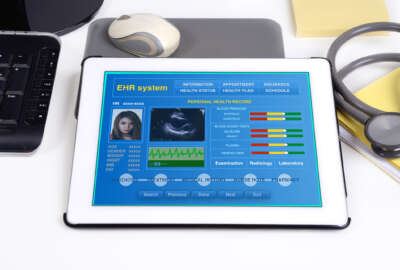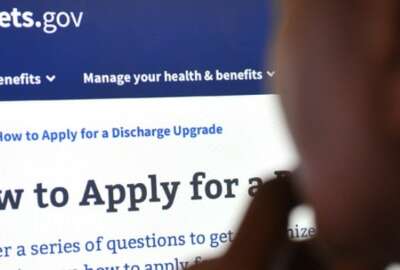
With urgency, VA deploys new capabilities to fix services almost every day
Marvo Dolor, the deputy executive director of digital services at the Veterans Affairs Department, said new single sign-on capability eases the path for veterans to...
Best listening experience is on Chrome, Firefox or Safari. Subscribe to Ask the CIO’s audio interviews on Apple Podcasts or PodcastOne.
The Veterans Affairs Department is working on no less than 11 different modernization projects to improve the Vets.gov portal.
These include straightforward efforts like getting VA to the cloud and improving procurement of technology. Marvo Dolor, the deputy executive director of digital services at the VA, said one of the more challenging initiatives was to create a single-sign on capability for the Vets.gov portal.

“This gives 4 million more veterans a very simple way to access the best tools for them to access care at the VA,” Dolor said on Ask the CIO. “Veterans also can use DS-Log on, which is the Defense Department system so that log-in they get when they enlist and MyHealtheVet, so you have millions more veterans can use the credentials they already have to get access.”
VA hired ID.me to implement the identity management system, which in 2016 met the level of assurance 3 (LOA-3) standard for security under the National Institute of Standards and Technology requirements. This meant that sharing personal information with doctors, nurses or other healthcare professionals became a lot safer and easier.
The broader integration with DoD’s authentication processes and MyHealtheVet, as well, is ensuring VA meets veterans where they live or work and does not force them to come to an agency office or to spend time on the phone.
“This particular improvement is around the fact that a lot of veterans may already have a relationship with a VA medical center and so by putting this consent form online you don’t have to make a special trip to that medical center that you already have a relationship with just so you can get access to online tools. That was the case before, and it was especially onerous for veterans in rural areas where there are now these tools online, but they may not have a medical center trip planned for months or even a year,” Dolor said. “Now they don’t have to make a special trip just to be able to get all of the access they want. We will continue to make improvements with an idea to take as much of the burden off the veterans as we can.”
The single sign-on capability is part of how the digital services group is improving the education benefits application and GI Bill statement of benefits. Veterans now can go online and see how much money they have left immediately instead of waiting for a letter in the mail or having to call the agency.
One of the biggest lifts for the digital services group was improving how the appeals process for veterans.
In March, VA launched the new appeals status track that lets veterans with a disability compensation appeal track what stage of the process it is in.
Dolor said veterans have told VA that they prefer to know where they stand in the line rather than not hear anything at all.
“This new status tool also will be helpful with the implementation of the Appeals Improvement and Modernization Act, that was signed into law last August and will go into effect in February,” she said. “We are working with the VA in trying to make sure we are not behind the curve ball with the implementation of the new law.”
The law requires VA to develop three different paths that veterans could take to pursue their appeal. One of those paths gives veterans the option to waive their right to a hearing or the ability to submit new evidence to get a faster appeal decision.
Dolor said for 2018 one of the big projects for the digital services group is fixing the disability claims process. She said right now veterans can track and manage their claims on Vets.gov in one seamless way, but they cannot apply for every single type of claim.
“We are knocking them off after the other so a veteran can go to one place and learn about the benefit, apply for that benefit, then track the status of the application and then manage the disbursement of that benefit,” she said. “The biggest one is disability claims. Dependent claims is another one we are working on this year.”
Dolor added the digital service office’s goal is not just to make the front end look good, but fix infrastructure problems.
“The biggest part of it is the back end, which no one will ever see,” she said. “We are working with our VA partners on how these forms that look beautiful interact with VA’s systems. A big part of that is developing application programming interfaces (APIs) so that you can modular reuse of those APIs depending on where you need them and what you need them for.”
Dolor said USDS deploys new code or new functionality every day as part of the dev/ops methodology, which lets them change, improve or fix functionality as they receive feedback from veterans and other users.
“We want to make sure that it’s very simple, [immeasurably] easy for anybody, whether it’s a veteran, a dependent, a caregiver, a Veterans Service Organization, even a current service member to go to VA.gov and quickly and easily find what they want,” she said. “That is the big overarching vision driving everything we do.”
To read more about Lauryn Fantano and Elliott Wilkes’ interview on this week’s “Ask the CIO,” click here.
Copyright © 2025 Federal News Network. All rights reserved. This website is not intended for users located within the European Economic Area.
Jason Miller is executive editor of Federal News Network and directs news coverage on the people, policy and programs of the federal government.
Follow @jmillerWFED
Related Stories







